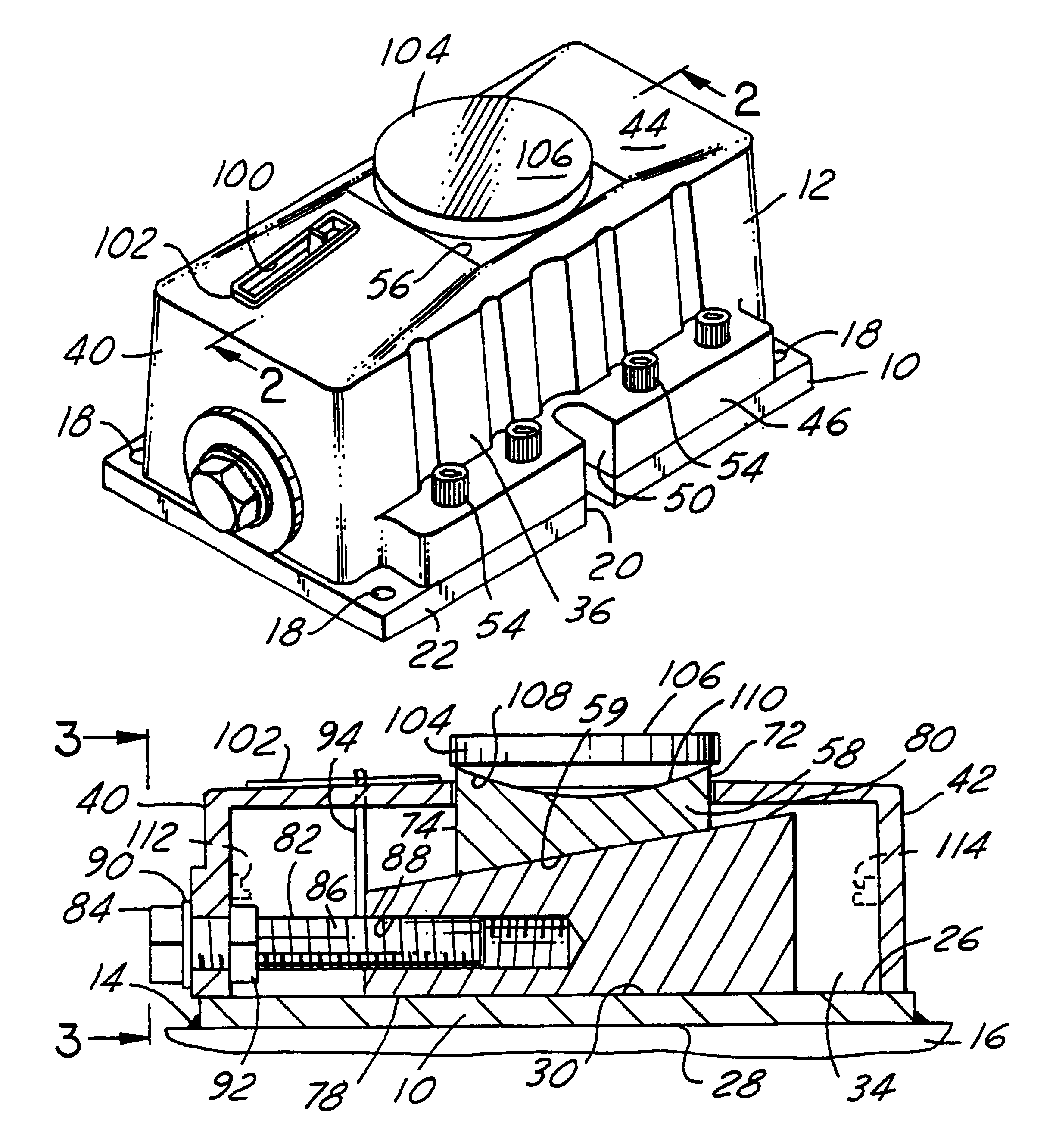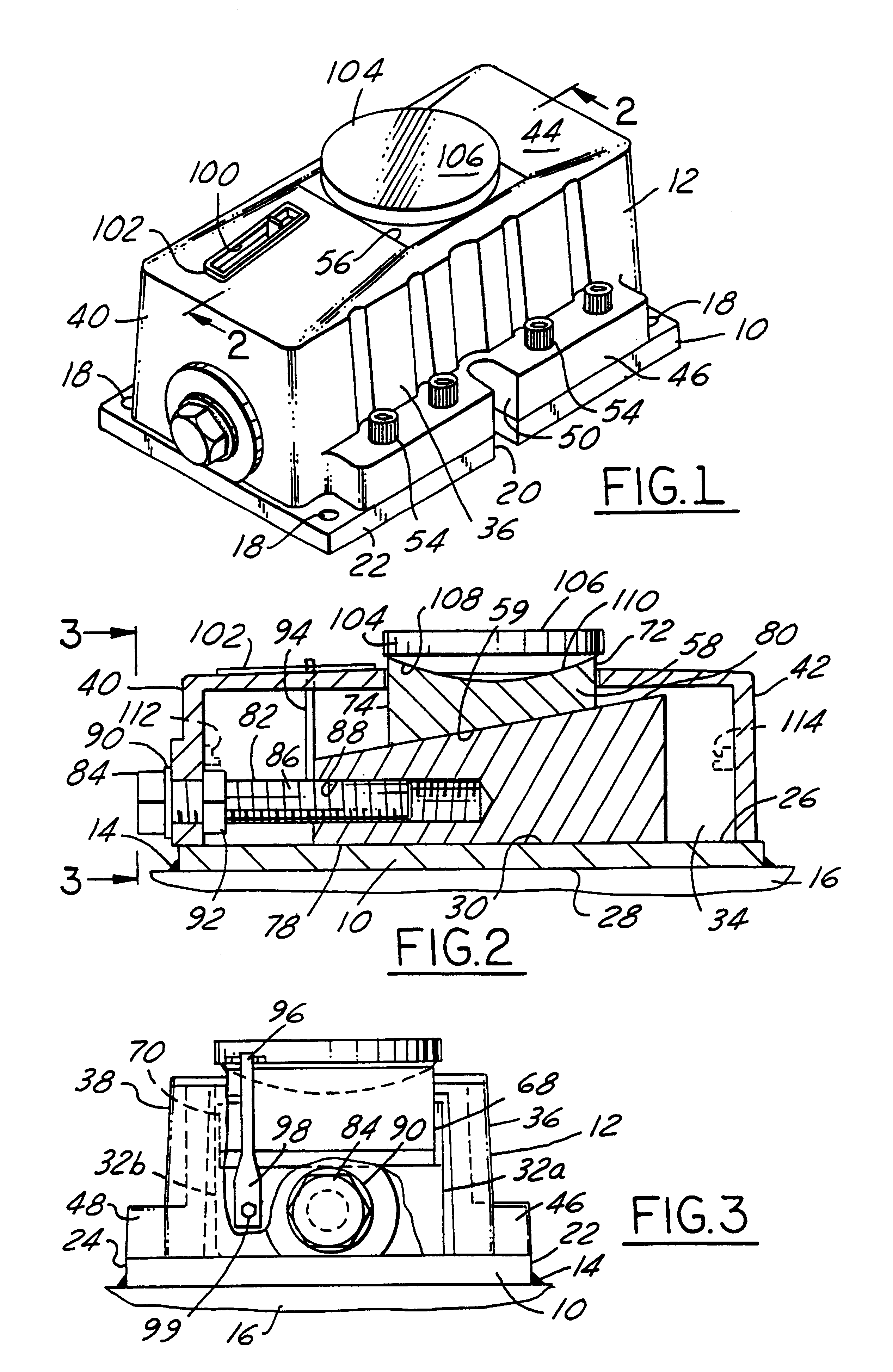Machine leveler
- Summary
- Abstract
- Description
- Claims
- Application Information
AI Technical Summary
Benefits of technology
Problems solved by technology
Method used
Image
Examples
Embodiment Construction
The leveler, as shown in the drawings, has a steel base plate 10 which may be of any desired size to carry the load. It is shown in the drawings as being just large enough to accommodate the cover 12, and while it should be no smaller, it can be substantially larger. The leveler design permits a customer to order the leveler with either a standard base, such as shown in FIG. 1, or any larger size base desired. Because the base is made of steel, it can be welded, as at 14, to a structural part 16 of the building in which the leveler is installed, or it can be installed with concrete anchors or other fasteners (not shown) as in the prior art. Threaded holes 18 at each of the corners of the plate, are provided for threadedly receiving therethrough levelling screws to level the base prior to grouting it in place in the concrete floor. Slots 20, one in each edge 22 and 24 are adapted to permit fasteners to be attached to the leveler to hold it down to the structure of the building. Prior...
PUM
 Login to View More
Login to View More Abstract
Description
Claims
Application Information
 Login to View More
Login to View More - R&D Engineer
- R&D Manager
- IP Professional
- Industry Leading Data Capabilities
- Powerful AI technology
- Patent DNA Extraction
Browse by: Latest US Patents, China's latest patents, Technical Efficacy Thesaurus, Application Domain, Technology Topic, Popular Technical Reports.
© 2024 PatSnap. All rights reserved.Legal|Privacy policy|Modern Slavery Act Transparency Statement|Sitemap|About US| Contact US: help@patsnap.com










